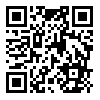Volume 16, Issue 4 (2025)
ihej 2025, 16(4): 1-17 |
Back to browse issues page
Download citation:
BibTeX | RIS | EndNote | Medlars | ProCite | Reference Manager | RefWorks
Send citation to:



BibTeX | RIS | EndNote | Medlars | ProCite | Reference Manager | RefWorks
Send citation to:
Ebrahimabadi H. Generations and student waves in post-revolutionary Iran
The form and nature of relationships and interactions within the university with the school and community background. ihej 2025; 16 (4) :1-17
URL: http://ihej.ir/article-1-2091-en.html
URL: http://ihej.ir/article-1-2091-en.html
Associate Professor, Institute for Social and Cultural Studies, Tehran, Iran. , h.ebrahima@gmail.com
Abstract: (1595 Views)
Objective: The aim of the present research was to understand the nature and factors shaping the relationships and interactions of different generations of students.
Method: To achieve this goal, a qualitative approach and phenomenological method were used. To obtain information, twenty-five students and graduates were interviewed in two semi-structured and open forms, and three group discussions were conducted in groups of three to five. The findings were classified into five categories: student generations characteristics before entering the university, characteristics of students in different courses and generations, experiences of life in the university and changes in attitudes therein, and finally the position of the university. In terms of content, the situation of students with the school background and social environment, the changing atmosphere of culture and society, and the evolving flow of the university were considered and paid attention to in components such as the feeling of belonging to the school and university, levels of interactions, employment prospects, hope for the future, individualism and collectivism, and continuity and discontinuity with culture and society.
Results: The results can be drawn as follows: over time, the university has lost its classic position under the influence of external changes (economy, society, and school) and internal changes (changes in the specific tasks of the university and the mental and attitudinal changes of students), and this has affected the form and content of student relationships and interactions, their preferences, the feeling of belonging to the university, and the functioning of student communities.
Conclusion: The most important thing in recent years is academic burnout, lack of motivation in learning formal programs, and the growing trend of feeling of failure. As a result, students have been led to activities and learning outside the university in order to get rid of compulsory styles and be more prepared for employment. In addition to having a profound impact on students' selective behavior and their response to the needs of new lifestyles, these changes mean that "learning space with utility", "learning interactions with leisure space" and "learning style with lifestyle" of students are increasingly close. Also, the personalization of students' learning for life in society and the fluid and unstable labor market is something that the university and its programs are not able or prepared to respond to.
Method: To achieve this goal, a qualitative approach and phenomenological method were used. To obtain information, twenty-five students and graduates were interviewed in two semi-structured and open forms, and three group discussions were conducted in groups of three to five. The findings were classified into five categories: student generations characteristics before entering the university, characteristics of students in different courses and generations, experiences of life in the university and changes in attitudes therein, and finally the position of the university. In terms of content, the situation of students with the school background and social environment, the changing atmosphere of culture and society, and the evolving flow of the university were considered and paid attention to in components such as the feeling of belonging to the school and university, levels of interactions, employment prospects, hope for the future, individualism and collectivism, and continuity and discontinuity with culture and society.
Results: The results can be drawn as follows: over time, the university has lost its classic position under the influence of external changes (economy, society, and school) and internal changes (changes in the specific tasks of the university and the mental and attitudinal changes of students), and this has affected the form and content of student relationships and interactions, their preferences, the feeling of belonging to the university, and the functioning of student communities.
Conclusion: The most important thing in recent years is academic burnout, lack of motivation in learning formal programs, and the growing trend of feeling of failure. As a result, students have been led to activities and learning outside the university in order to get rid of compulsory styles and be more prepared for employment. In addition to having a profound impact on students' selective behavior and their response to the needs of new lifestyles, these changes mean that "learning space with utility", "learning interactions with leisure space" and "learning style with lifestyle" of students are increasingly close. Also, the personalization of students' learning for life in society and the fluid and unstable labor market is something that the university and its programs are not able or prepared to respond to.
Keywords: student generations, relationships and interactions, pre-university characteristics, university specific tasks, mental and attitudinal changes
Type of article: Research |
Subject:
Special
Received: 2025/03/1 | Accepted: 2026/03/19 | ePublished ahead of print: 2025/07/2
Received: 2025/03/1 | Accepted: 2026/03/19 | ePublished ahead of print: 2025/07/2
Send email to the article author
| Rights and permissions | |
 |
This work is licensed under a Creative Commons Attribution-NonCommercial 4.0 International License. |





